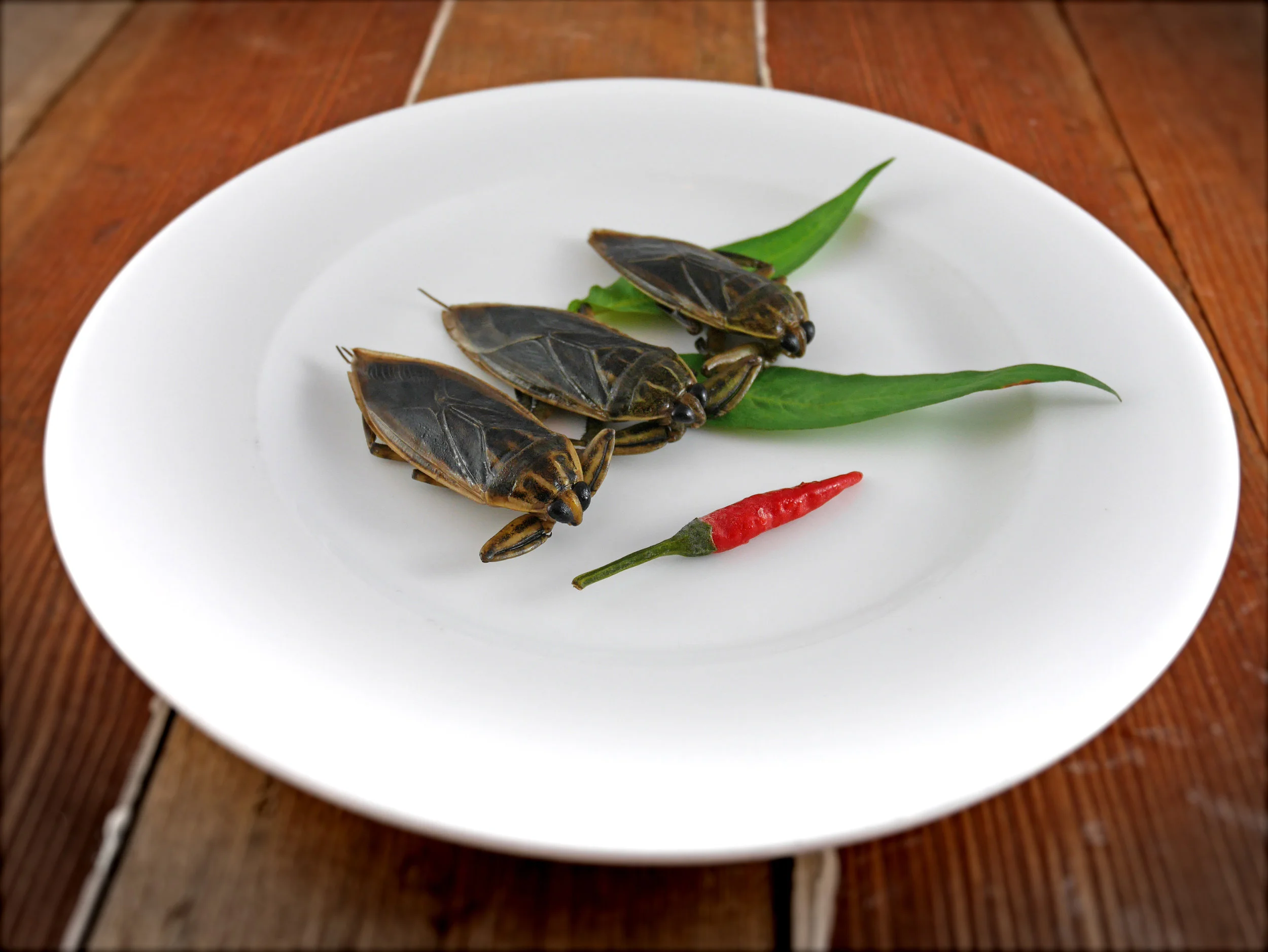Insects bug most Americans. Captain Obvious strikes again. But a steadily growing number are opening their minds (and mouths) to potentially eco-friendly, often-nutritious six-legged grub. My bug buddy Michelle and I met one such fellow edible insect enthusiast while in Mexico to perform at a music festival. Tiffany was one of a group of performers and staff who'd decided to explore Teotihuacan, Mexico City's nearby pyramid complex, on the day before the show. Following the pyramid climb, Michelle and I wanted to patronize a nearby cave restaurant called La Gruta, and were ecstatic when we realized there were bugs on the menu. Tiffany was similarly excited, showing us a photo of her with a Giant Water Bug at a Seattle restaurant. Spiced caterpillars, chapulines (spiced grasshoppers) and escamole (ant eggs and larvae) were among the delicacies we dined on that day.
Fast forward several months. I'd gotten booked to dance on stilts at a Washington festival called Paradiso, and would be carpooling with Tiffany from Seattle. Patronizing the eatery where Tiff had imbibed Giant Water Bugs was a must. Upon arriving at Nue, the restaurant in question, I was hardly surprised to learn its menu is inspired by global street food (Linger, a Denver restaurant I blogged about recently, operates on a similar concept). In Japanese mythology, a Nue is a supernatural creature with the face of a monkey, the torso of a tanuki (Japanese raccoon dog), the limbs of a tiger and the tail of a snake. In other accounts, it has the back of a tiger, the legs of a tanuki and the tail of a fox (in yet other descriptions, it has the head of a cat and the torso of a chicken). It's an appropriate metaphor for Nue's menu, which is currently influenced by culinary treats from Bali, Barbados, Brazil, Burma, Cambodia, Ecuador, Holland, Hungary, Israel, Jamaica, Mexico, The Philippines, Puerto Rico, South Africa, Syria, Thailand and Vietnam.
Thailand is a hub of the edible bug world. No single country devours more insects. According to some accounts, vendors can barely keep pace with the demand, importing what they can't farm or harvest locally from neighboring countries. Unsurprisingly, Nue gets its Giant Water Bugs from Thailand. Flash frozen for the journey, the insects are thawed, blanched in salted water and served. My absolute favorite aspect of the experience was the smell. Giant Water Bugs smell intensely of flowers. I couldn't get enough. I probably inhaled the large insect's aroma for several minutes before even contemplating tasting it. A short photo shoot followed. To be clear, I don't pose with my bug bites to shock people. I do it to engage people in conversation, whether it's illogically biased bystanders, curious potential converts or hardcore entomophagists (edible insect enthusiasts). Being the only Giant Water Bug vet in our party, Tiffany demonstrated the ideal, shellfish-informed ingestion method (all insects are arthropods, which means they're related to shellfish).
Finally ready to dine, I tore the bug's wings off and broke open its body in order to suck out the insides. There are some 1900 species of insects known to be safe for human consumption. And it's estimated that about two billion people have intentionally tried at least one. Still, that's hundreds of flavors that many of us may never experience. Some of us refuse to sit idly by while global culinary adventures await. Nue's Giant Water Bugs certainly tasted strongly of the salt they were blanched with, but I have no words to describe the remainder of the unusual flavor.
If you find yourself in the shadow of the Space Needle, embark on a culinary journey at Nue.
VISIT SITE

